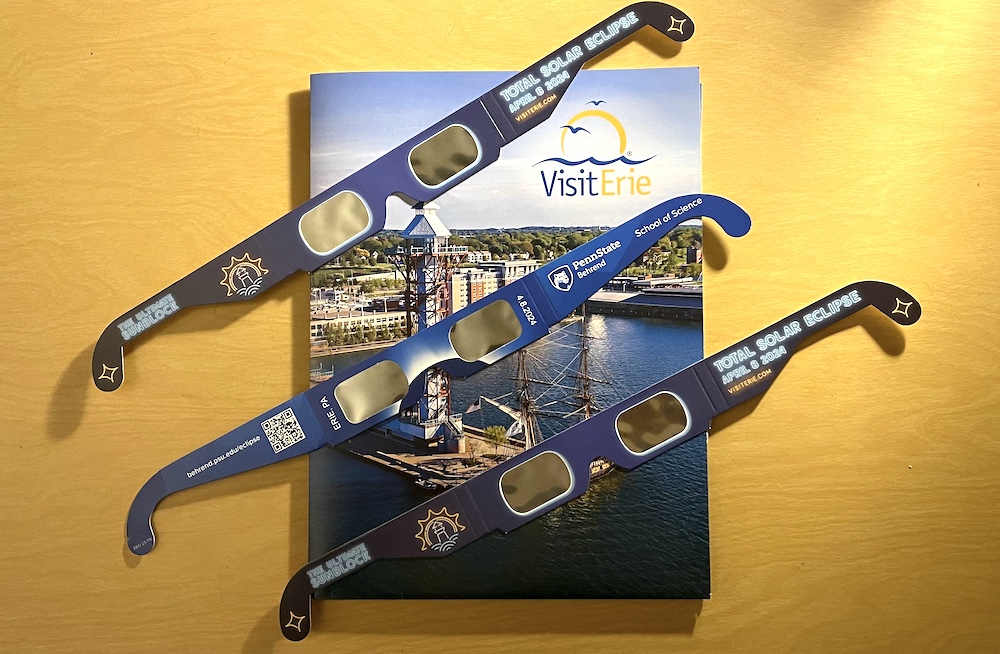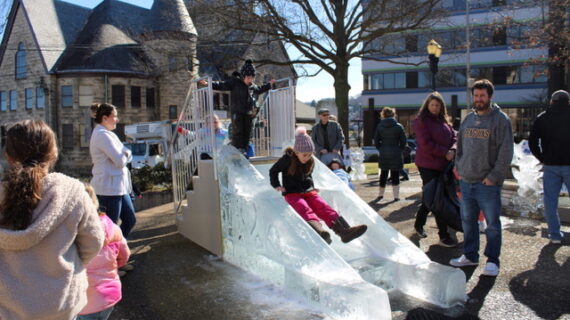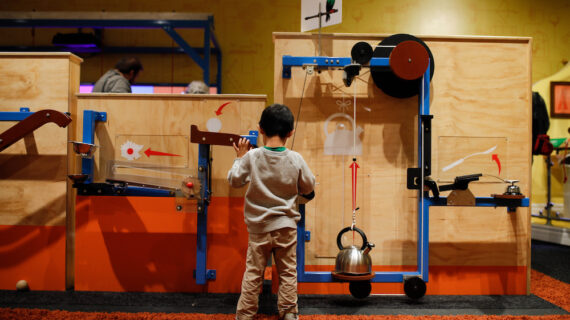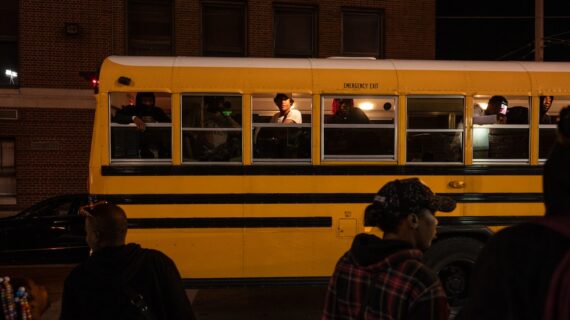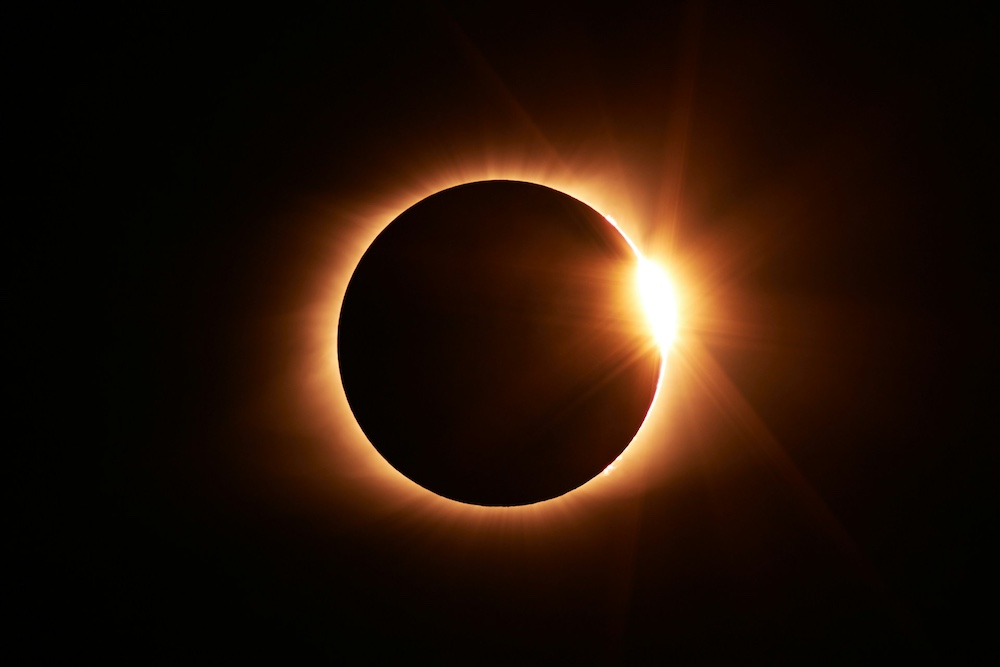
A total solar eclipse is coming to our region: Here’s how your family can experience it
Photo above by Jongsun Lee via Unsplash.
On Monday, April 8, the moon will block out the sun in a total solar eclipse. That’s not unheard of: Solar eclipses happen about every 18 months. But only a small portion of the planet gets to see one when it happens. Most people go their whole lives without experiencing this natural phenomenon.
Here’s the exciting news for Pittsburgh-area families: When darkness falls at midday in a narrow, diagonal stripe across the United States, the Pittsburgh area will experience about 95 to 97% darkness, though some glow of light will still be visible. And in Erie, Pa., the sky will become completely dark at exactly 3:16 p.m. on that Monday afternoon.
It’s worth catching: According to the folks at Penn State Behrend’s observatory, the next total solar eclipse won’t come our way until Oct. 26, 2144.
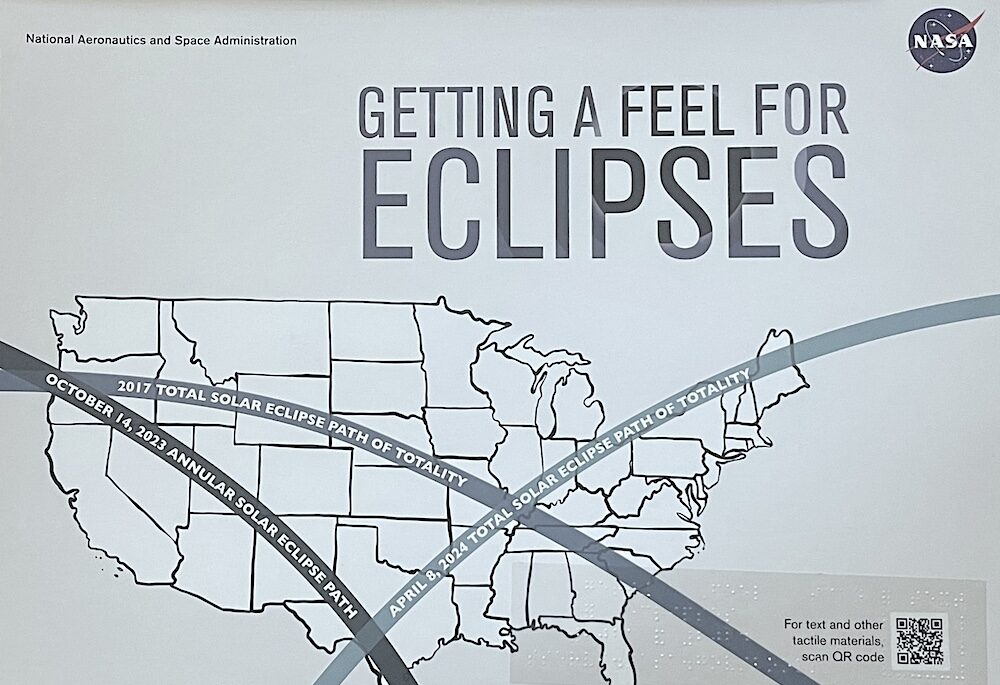
The Kidsburgh team is excited to help local families make the most of this great opportunity for science learning. Whether you’re planning a visit to Erie for the eclipse or you’ll experience this solar event here in Pittsburgh, here are all the details:
VIEWING IN PITTSBURGH
On April 8: Since the eclipse will reach us in the afternoon, the sun will be relatively high in the sky. So you’ll be able to experience it from most wide open spaces within the Pittsburgh area. The key will be protecting your eyes. It’s very important not to look directly at the sun.
Learn more here from NASA about eye safety during eclipse viewing and how to make your own eclipse viewer before April 8. Looking for eclipse viewing glasses? Visit the Carnegie Museum store right here.
Ahead of the eclipse, consider spending a day with kids at Buhl Planetarium and Observatory, located at the Kamin (formerly Carnegie) Science Center. And on the day of the eclipse, the Science Center is hosting a viewing party. Get all those details here.
And for solar science learning at home, Yahn Planetarium at Penn State Behrend in Erie has created a great site for families to explore together online.
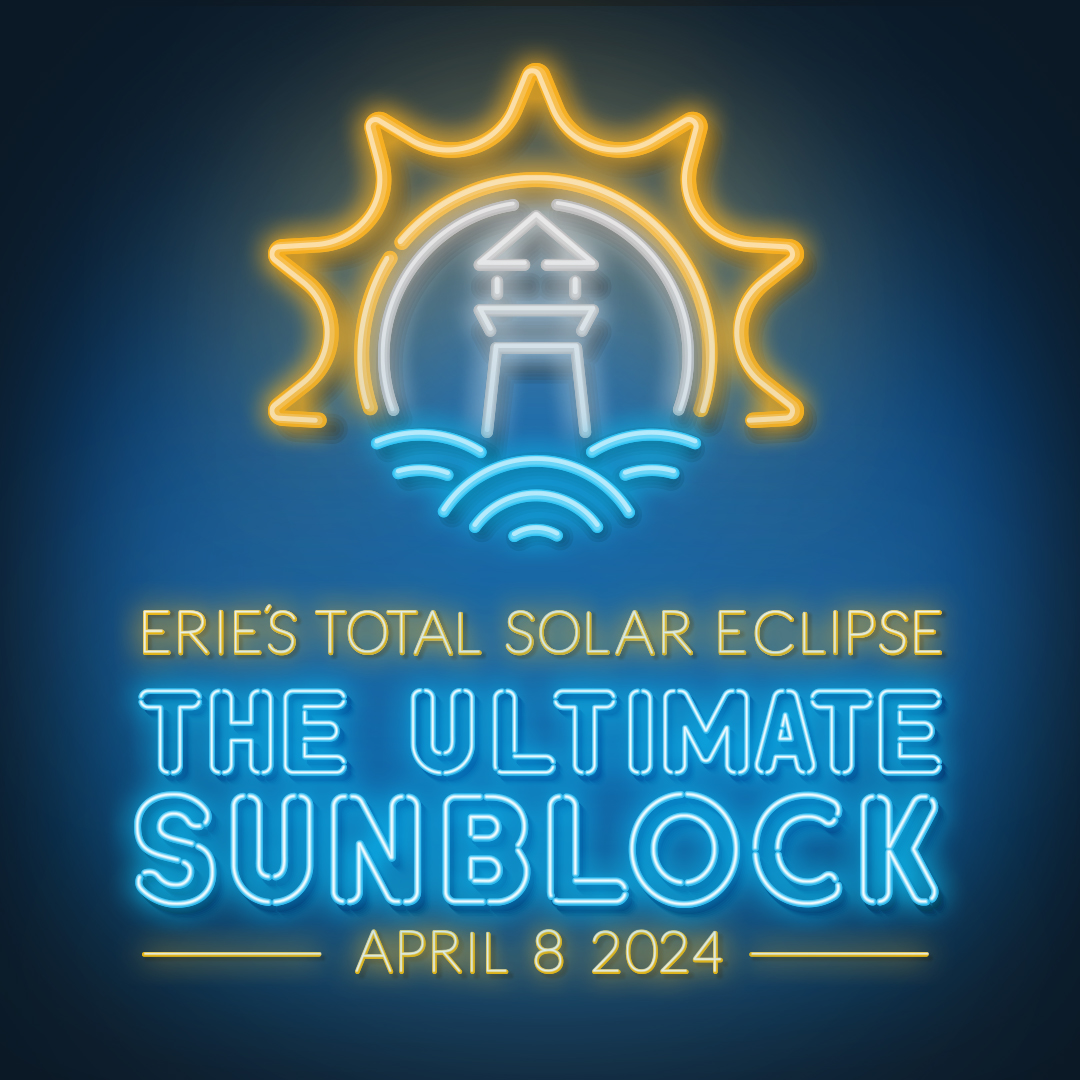
VIEWING IN ERIE
Getting there: Erie is normally about a two-hour drive from the city of Pittsburgh. But on April 8, don’t expect normal traffic. Though there’s no way to forecast exactly, Erie’s tourism office is expecting between 65,000 and 250,000 visitors to arrive for this experience.
Although schools in Erie will be closed that day to keep buses off local roads, the highways heading into Erie will likely be crowded. So leave very early that morning to get ahead of the traffic or plan to stay in the Erie area the night before.
Where to stay: If you’re planning an overnight stay, hotels in Erie’s bayfront area are already sold out, as are campgrounds. Hotels and motels along I-79 and I-90 have a few rooms left, though prices are rising. (One solution if you can’t find a hotel room in Erie proper? Stay midway between Pittsburgh and Erie in a place like Oil City.)
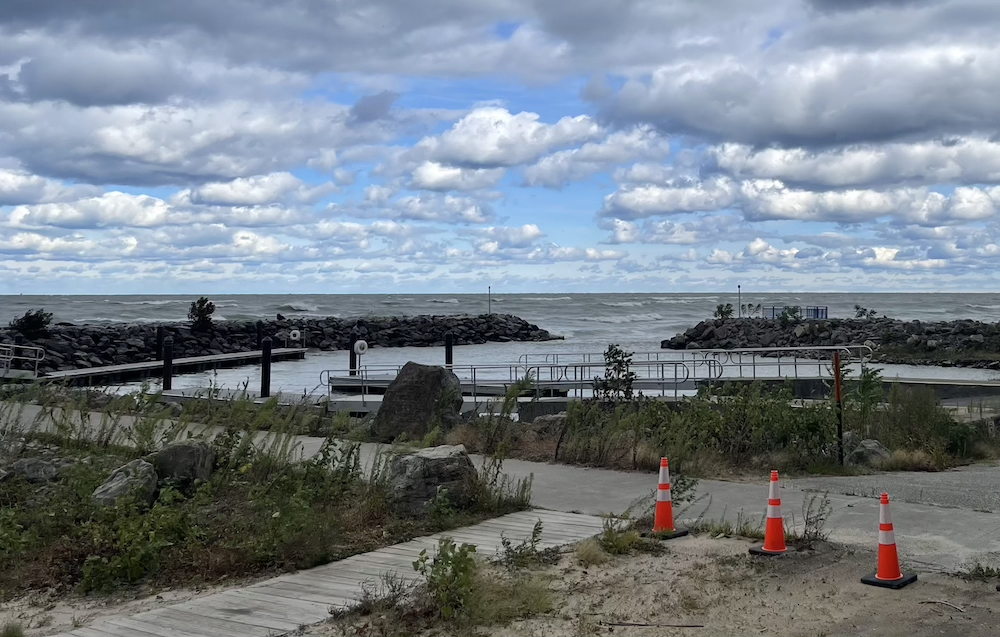
Photo by Melissa Rayworth.
Where to watch the eclipse: Though the view will be spectacular from Presque Isle, there’s only one road on and off the peninsula. So organizers are expecting a huge traffic jam and strongly urging people to avoid the island. Bypass that and go to:
- Shades Beach Park in Harborcreek, just north of Presque Isle along the lakefront
- Freeport Beach in North East, even further to the north along the lakefront
- Liberty Park, overlooking Presque Isle Bay (this is likely going to be a popular spot)
- Perry Square Park on State Street
The good news is, you don’t have to choose one of these busy locations in Erie to have the full experience, says VisitErie communications director Christine Temple. Because the sun will be relatively high in the sky and Erie isn’t full of tall buildings, most open spaces will offer a great view.
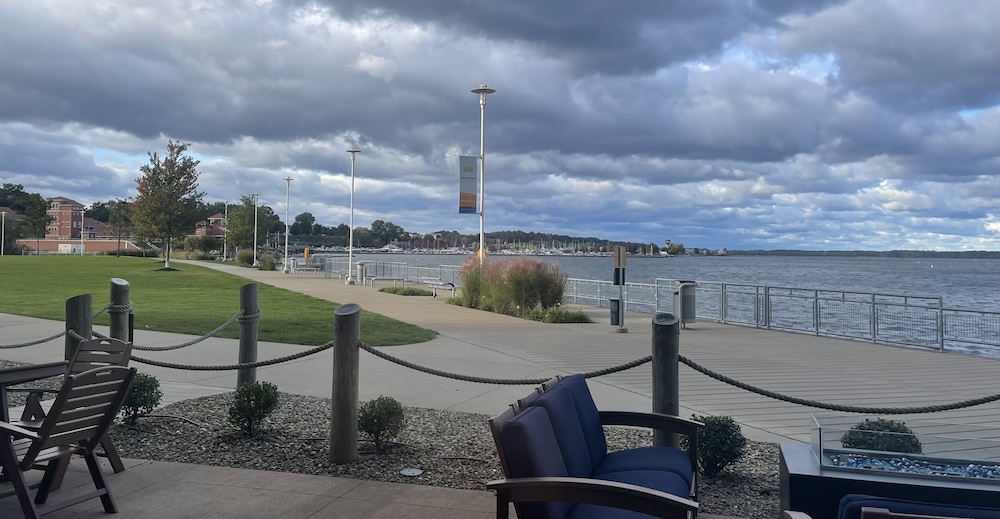
When to watch: The first moments of shadow across the sun will begin at 2:02 p.m., but you may not notice much right away. As the minutes pass, the partial eclipse phase will progress until the moon totally blocks the sun beginning at 3:16 p.m. (3:16 and 23 seconds, to be exact). That’s when Erie will experience full nighttime darkness lasting for three minutes and 41 seconds. At five seconds after 3:20 p.m., the sun will slowly begin to reappear. The sun will be fully visible by 4:30 p.m.
But with massive crowds gathering, of course, you’ll want to get settled in place hours earlier rather than waiting for 2 p.m.
What you’ll need:
- Drinks and snacks for the hours you’ll spend waiting for the big moment to arrive.
- Games or toys to keep kids entertained while waiting.
- Eclipse glasses or a DIY solar eclipse viewer. (Learn more here from NASA about eye safety during eclipse viewing and how to make your own eclipse viewer.) VisitErie will distribute “The Ultimate Sunblock” eclipse glasses on a first-come, first-served basis from April 5 through 8 at three locations: the I-90 Pennsylvania Welcome Center (at the PA/NY border), the I-79 rest stop near Edinboro (northbound) and the Erie Visitor Center at the Tom Ridge Environmental Center. Also, Country Fair gas station locations throughout northwestern Pennsylvania will distribute eclipse glasses free with every purchase beginning March 1, while supplies last.
Make it a Weekend
If you’ll be making a weekend of it or staying in Erie on Sunday night to get settled ahead of the crowds, there’s plenty to enjoy.
- Places to eat: Flagship City Food Hall at Perry Square has enough options to please the whole family. For breakfast, lunch or dinner the Skunk and Goat has great food. And if you’re in the mood to splurge in the Bayfront area, Oliver’s Rooftop Restaurant offers panoramtic views of Presque Isle, Lake Erie and the bayfront district.
- Things to do: Don’t miss the Erie Zoo, the expERIEnce Children’s Museum and the Maritime Museum. And on Saturday, April 6, Penn State Behrend’s Yahn Planetarium will be closed for regular show times but will host a special eclipse show at 1 p.m. (This will likely be popular, so arrive early.)
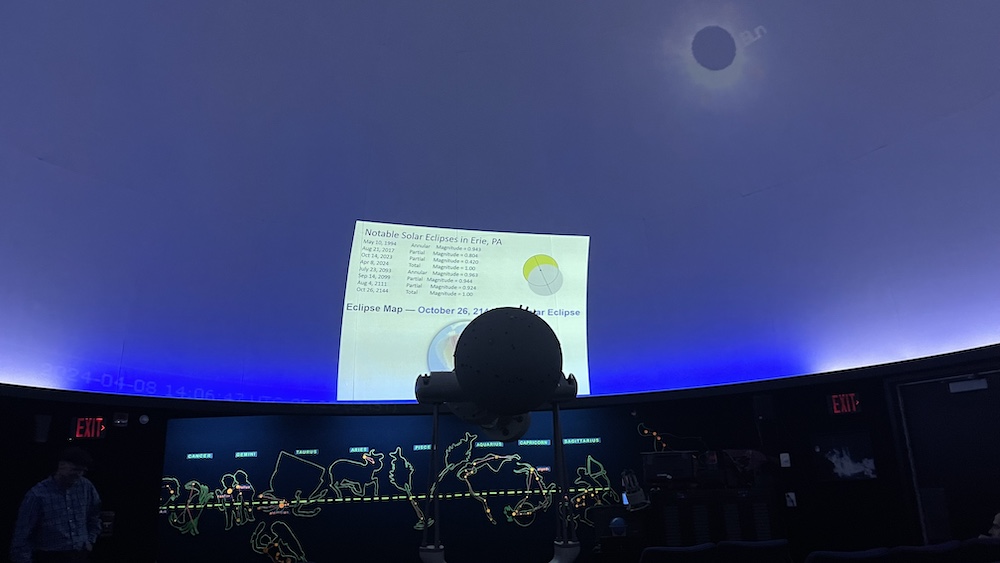
Want to visit Erie in February or March to get kids excited about the eclipse?
Yahn Planetarium is hosting weekend events during February and March that are perfect for families gearing up for the April eclipse ($3 for kids, $5 for adults):
- Saturdays at 10 a.m.: Larry Cat In Space – Follow Larry Cat as he somehow ends up on the Moon. Families will learn about gravity and what it would be like to live on the Moon. Recommended for ages 5 and up.
- Saturdays at 11:30 a.m.: TOTALITY! – Learn why eclipses happen, how to safely view them, and where you need to be to capture this beautiful event. Recommended for ages 9 to adult.
